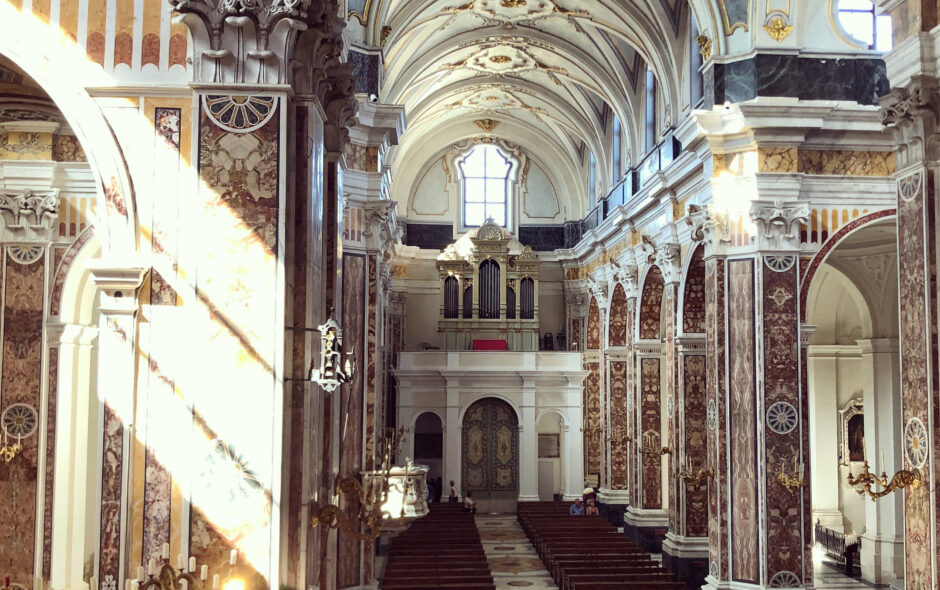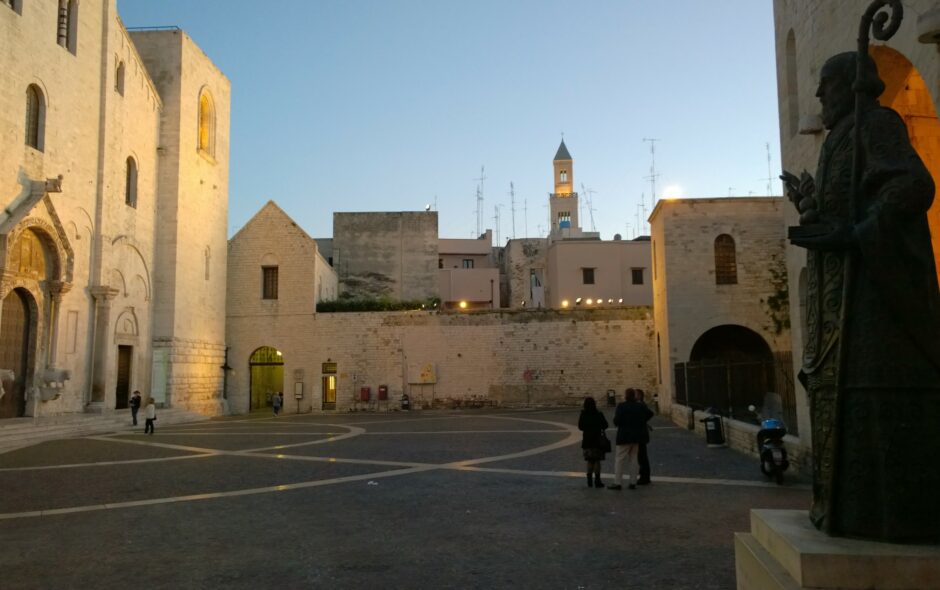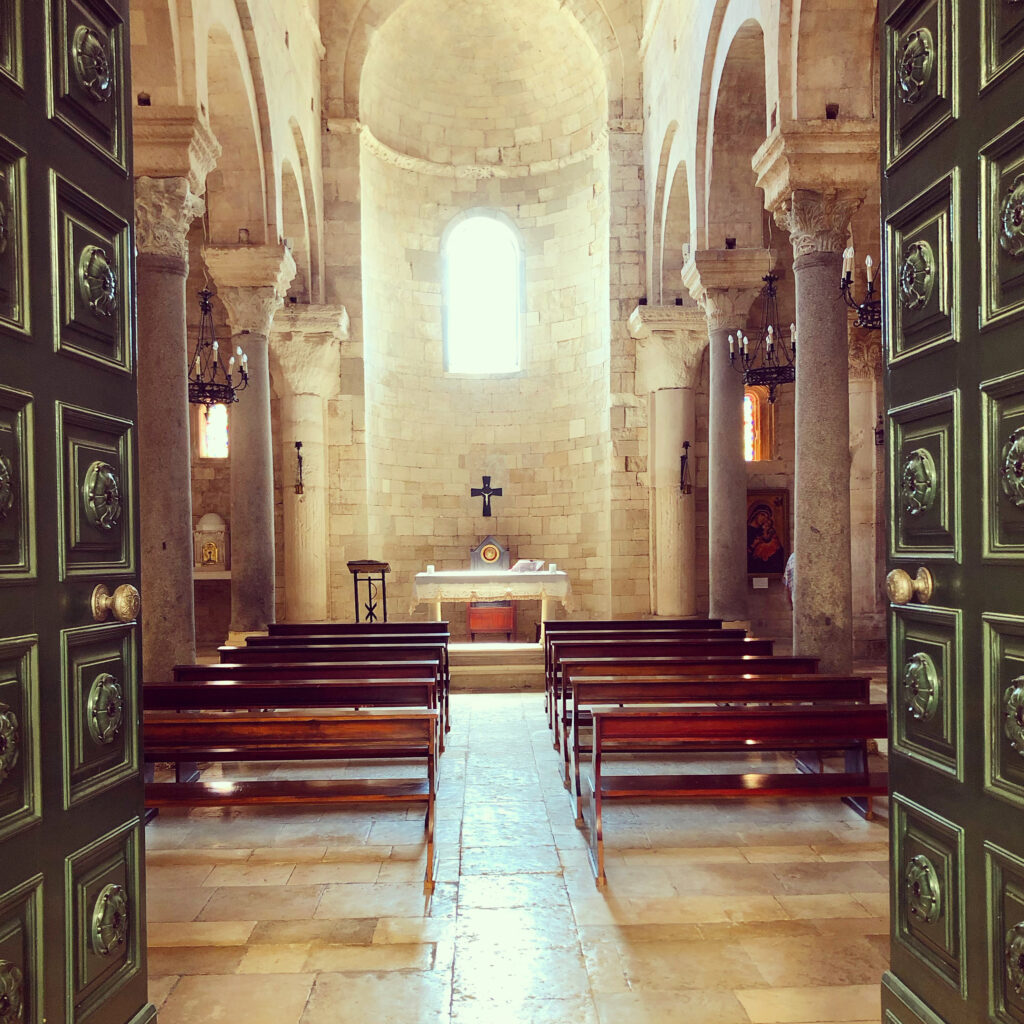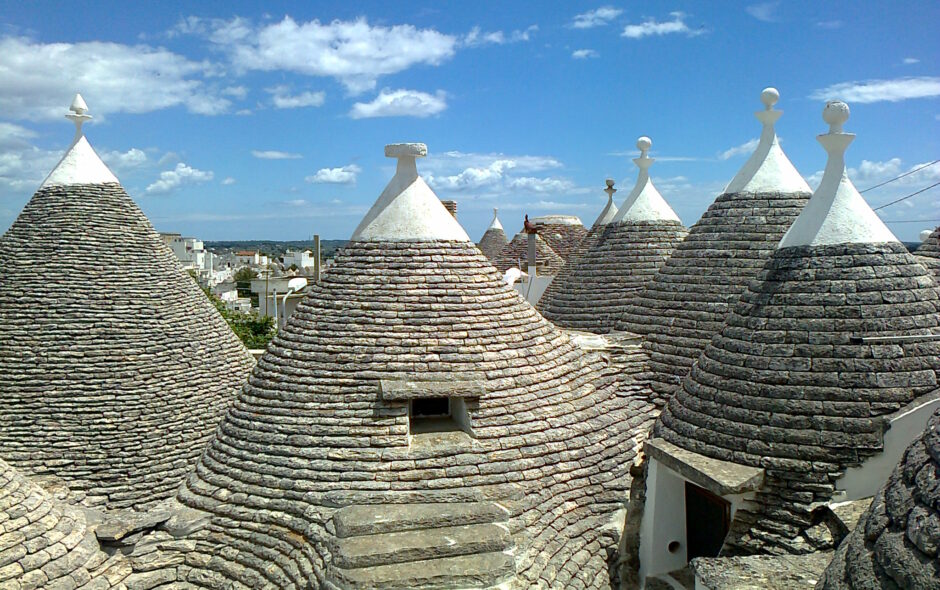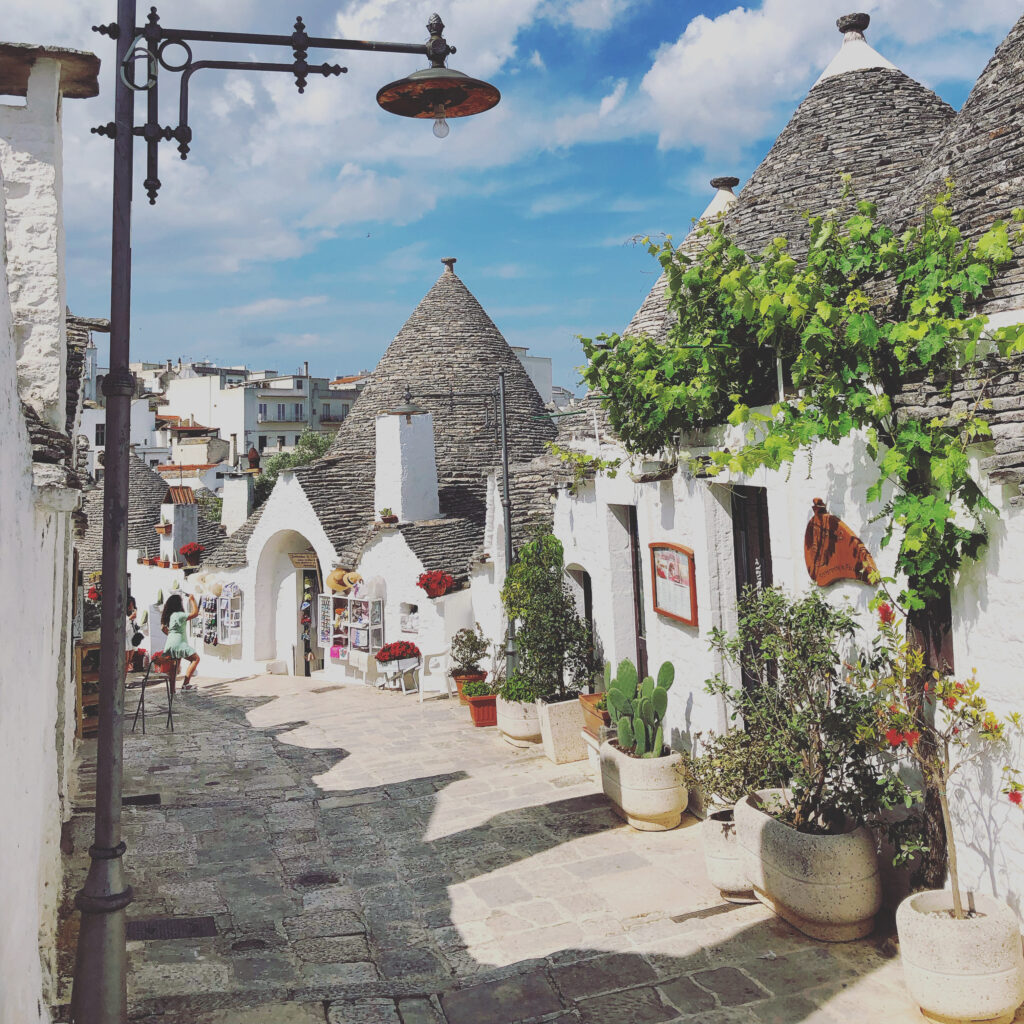The Baroque is a highly ornate and elaborate style that flourished in Europe in the 17th and first half of the 18th century. The origin of the name is after the French word barroque, meaning “irregularly shaped.” At first, the word in French referred mostly to pearls. Eventually, it came to describe an extravagant style of art characterized by curving lines, gilt, and gold.
As artistic style, it was born in Rome in the 17th century, spread in Spain, then returned to southern Italy through Naples. In Lecce ( the main city in Southern Puglia) it takes on such special characteristics that we have to talk about Lecce Baroque. Lecce is one of Italy’s oldest (2,000 years), most beautiful and richly Baroque cities, also known as the “Florence of the South”.
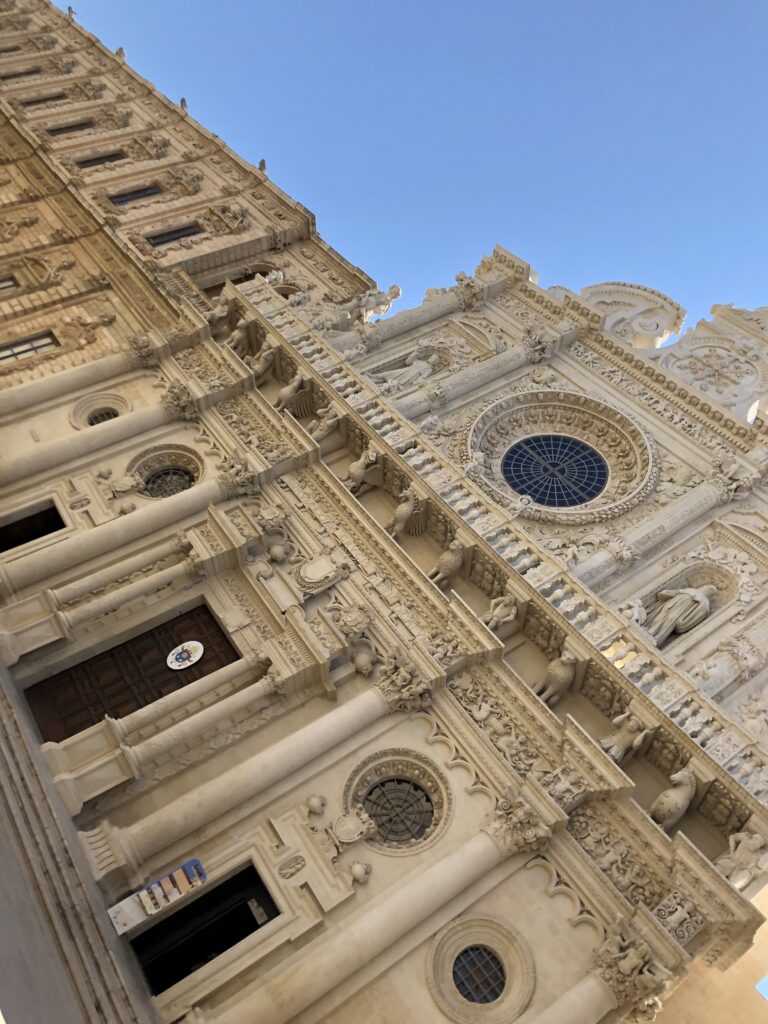
The Baroque was not only a cultural movement, but also a response to Protestant heresy and the Counter-Reformation, to underline the power and will of Catholics to carry forward their faith. That’s why it is present in most buldings of historic centre, but in churches it reaches its peak.
Walking around Lecce, you’d see detailed lion heads supporting balconies, the “embroidered” rose windows of the churches, the monumental portals of historical palaces and the very rich decorations inside and outside the basilica. All those decorations and buldings are made of a cream-colored limestone called “Lecce stone” that is easy to carve.
The Lecce stone, which shows a straw yellow color during the day, manages to transform as the hours pass and when the sunset gets closer. Therefore the streets and sqaures of the city can become romantic and intimate in the evening, when that stone acquires orange, soft and delicate tones, similar to no other one.
Come and visit Puglia with us to exlpore Lecce and further beautiful places of this lovely region.

